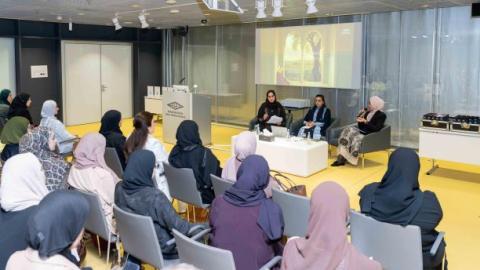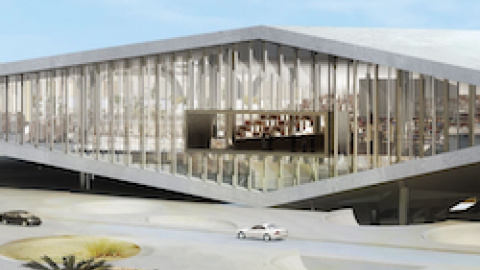
Floods and tsunamis are among the most destructive natural disasters and can severely impact the ecosystem, coastlines and landforms. Although Qatar is predominantly an arid desert environment, several small tsunamis and floods have shaped its coastal and in-land landscapes in the past. According to Dr. Oula Amrouni, Research Scientist in Marine Geology at the National Institute of Marine Sciences and Technologies at the University of Carthage in Tunisia, these changes continue to affect the country’s ecosystem to this day.
Dr. Amrouni was a guest speaker at a Qatar National Library event, entitled, “The Amazing Story of Qatar’s Tsunamis and Floods,” which brought together more than 250 science enthusiasts on 26 January to explore how extreme weather phenomena have shaped Qatar’s geographical evolution and cultural identity.
Dr. Amrouni shared insights about the basis and similarities of coastal changes in arid areas such as Qatar and Tunisia. “The coast of Qatar is shaped by both geological and marine processes, and is particularly affected by natural hazards such as tsunamis and extreme waves and storm surges,” she revealed. “In fact, the geological setting of the Arabian Gulf has a rich history of earthquakes that have generated tsunami waves. It is important for everyone who lives in these areas to understand the history of coastal changes, and how to better manage the ecosystem.”
The event was part of the Library’s Science Book Forum, chaired by Dr. Essam Heggy, which is intended to encourage youth and the general public to develop a lasting interest in reading science books.
Dr. Heggy said: “Qatar has unique coastal dynamics. It has constantly changed its landforms over the last few thousand years, turning Qatar from a landlocked area to a Peninsula. The eastern Arabian Peninsula has been subject to important coastal changes, with water emersion covering huge areas and causing important population migration. This, in turn, has affected social behaviors from thousands of years to present, including the development of tribal communities, and tested inhabitants’ survival skills as they struggled to adapt to such a harsh and rapidly changing environment.”
A diverse group of audience including students, teachers and members of the community, engaged in a lively discussion with the guest speaker, and Dr. Heggy, who moderated the event.
“I did not know much about tsunamis and floods in Qatar before this event. It is important for youth who want to build careers in science to learn about these topics,” said Abdullah Mohamed Mansour, a 16-year old student from one of the local schools. “The Library is a very important place in this country and everybody should visit to learn new topics and meet new people.”
“I was here to learn a new topic that is different from cinematography, which is what I do daily,” said Fadi Kolta, another participant at the event. “I thought tsunamis only happen in Southeast Asia. It is now clear to me that these disasters can happen anywhere, even in this region. I encourage everyone to study about the history of tsunamis and floods and other interesting science topics by attending these events.”







